If you’re like me, then I bet you also spend almost 80% days in a year on a boat riding to many adventurous and interesting places across the world. It offers a lot of excitement and thrill , but it also comes with a few shortcomings as well.
If you’re spending a lot of time on a boat then you need to tackle problems like lack of foods, boredom, and a few other things. But, most of these issues can be taken care of if we can grow plants right inside our boat.
But, can you grow plants on a boat for real?
Yes, you can grow plants on a boat but you need to set up the right system (hydroponic is the most preferred one) to do that.
Growing plants on a boat can offer a range of benefits such as self-sufficiency, a cure for boredom, an upswing in the production of dopamine, fewer insects to deal with and, of course, pure aesthetics.
It’s hard to imagine that these factors alone could be shot down with drawbacks, but as the pendulum swings, there are some minor cons.
For example, lack of space, materials including soil and fertilizers, the ability to source fresh, clean water, finding relief from excess salt (if coasting on salt water) and any unexpected turbulence. All issues aside, can you grow plants on a boat? Why, of course, you can.
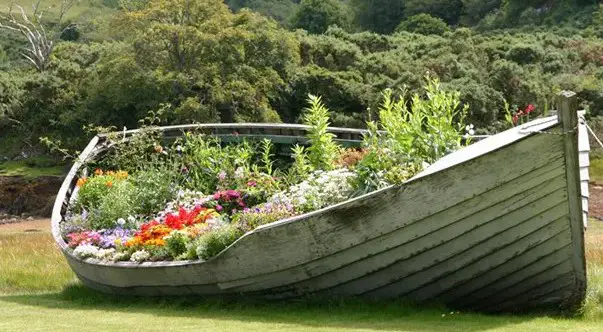
All you need is a little knowledge to build that confidence to succeed. Let’s dive into some finer details to help get a better understanding of how a floating garden can work for you.
Table of Contents
Can you grow plants on a boat?
Plants can be grown on a boat. The best methods to use considering the amount of space and lack of resources a common boat has is hydroponics or shared space planter boxes. You can also sprawl out some standard pots, but they tend to use a lot of space.
A tightly packed hydroponics system can be grown in a 15 square meter area and be ample supply for small families on a self-sufficient voyage.
Of course, the taste would be lacking as the variety wouldn’t be so vast, but it could keep tummies fed almost indefinitely. Planter boxes are a great rooftop addition; herbs can go wild and crazy with minimal maintenance.
How to Grow Plants on a boat?
The beauty of growing plants on a boat is the abundance of free sunlight that can be utilized. Providing the days have some kind of rays, a boat can be spun around to follow the sun, making it a super effective way to grow. Regardless of the growing method, plants need sun!
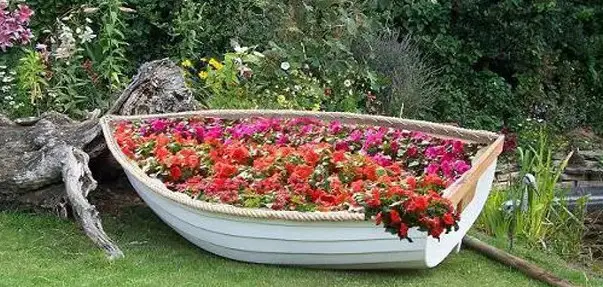
If you are on the water long term and land is not always accessible, then the method with the greatest yield would be hydroponics. They are usually pretty simple to set up, reasonably inexpensive, and quite easy to maintain. Hydroponics can produce all plants, including flowers, succulents, fruits, vegetables and herbs.
A hydroponic system will also help conserve precious fresh water and severely reduce the amount of mess created by a normal soil garden.
Simple Hydroponics Setup
Let’s look at a simple setup that can be moved around at will. It will be self-sufficient and light enough to maneuver. It can even be hung up if required. Once you understand the concept, you can create elaborate setups using the same methodology.
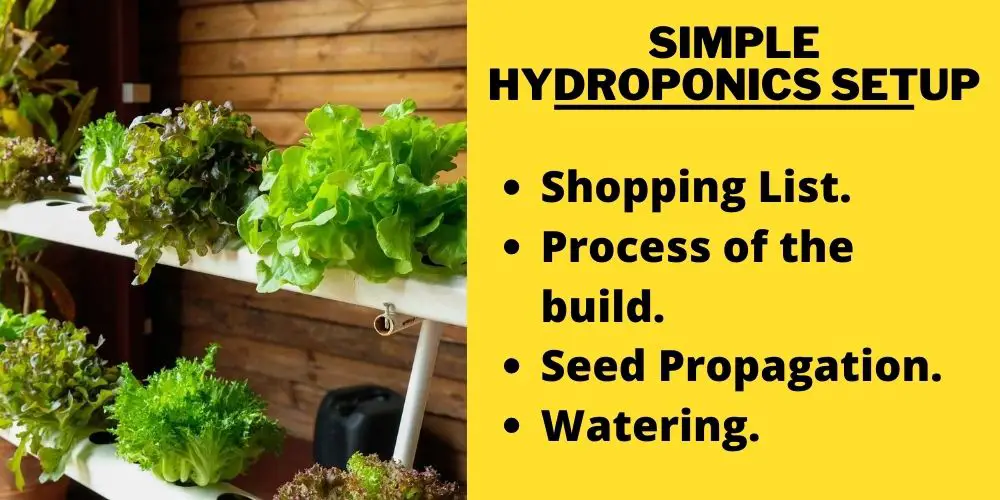
Shopping List
- Hack Saw + spare blades.
- Drill/impact driver.
- 3” hole saw attachment.
- ½“ hole saw attachment.
- Small air pump + ½“ tube attachment.
- 1 X 3 meter length 4” PVC pipe.
- 2 X 4” end caps.
- 1 x 4” plug cap (for the reservoir).
- 4 X 4” end caps with 1“ threaded outlets.
- PVC glue.
- 1 X 1.2 meter length 3” PVC pipe.
- 2 x 3” end caps.
- These items are to help suspend the whole system.
- Fittings for feeding tubes include:
- 2-3 meter roll of 1” tubing.
- Joiners for a tube to threaded outlets (1“).
- 1 X 1” brass T join.
- 3 X 1” clamp rings.
- 1” air bleeder (to allow water to flow back into the reservoir).
- 1 meter roll ½“ tubing.
- Threaded elbow joint from PVC to ½“ tubing.
- 3“ net pots (however many you desire).
- Seedlings or cuttings of choice.
- Rockwool cubes.
- Clay pebbles.
- Nutrient Solution.
Process of the build
Although there are many parts involved, the system is quite compact. Here’s how to put it all together:
- Cut the 3 meter length of 4 “ PVC into 3 X 1 meter lengths
- Starting with one of the 1 meter lengths, we will make the reservoir. Add the plug cap to one end; this will prevent any leakage. Then glue an end cap with a 1” threaded outlet to the other end. Make sure the threaded outlet is at the bottom.
- Drill a hole using a ½ “ hole saw at the top side of the same cap. This is where we will feed the air into the reservoir.
- Take the remaining 2 lengths of 4 “ PVC pipe and glue a standard end cup on one end of each. Then, on the other ends, we will glue on an end cap with a 1” threaded outlet.
- Use the 3” hole saw to drill out evenly spaced, zig-zagged holes where the net pots will sit.
- Glue the 2 X 3” caps onto each end of the 1.2 meter length of 3” PVC pipe
- Now we have the lengths complete, we can use PVC glue to stick the 4 pipes together in an upside-down triangle shape. The reservoir should be on the bottom, the 2 plant holders will be on the top, and the 3 “ length should be glued between the planter lengths. The 3” length will be used to tie a rope so it can hang anywhere.
- Note* Make sure that the plug cap end and the 2 standard cap ends are on the same side once glued.
- Once the glue has dried, it’s time to connect the fittings and tubing.
- Connect the joiners that will go from the outer PVC pipe threads to the tubing on all 3 outlets.
- Cut 2 even lengths of the 1” tubing and attach them to the connectors from the PVC outlets.
- Attach the 1” brass T join to the other ends of the first 2 pieces of tubing. Use 2 of the clamps to make sure they are completely tight.
- Cut another length of tubing long enough to curve from the reservoir pipe without crimping up to the brass T join. Add in the air bleeder before attaching the tube with the remaining clamp.
- Attach the ½” threaded elbow joint to the hole drilled out on the top of the reservoir pipe.
- Attach the ½” tubing to the elbow joint and roll out the length to wherever you wish to set up your air pump.
- Test it out by filling the plant pipes with water and letting it run into the reservoir. Then turn on the pump to ensure it pumps back into the plant feeding pipes.
- Once satisfied, mix up some nutrient solution according to the instructions and make sure it makes its way down into the reservoir.
- Set up your net pots with clay pebbles at the bottom and rockwool at the top. Add your seedling or cutting and set the net pots in the drilled-out holes.
- Take a bow and turn your system on.
- Add ropes to the 3” PVC pipe and hang up wherever you have space. Preferably somewhere with adequate sunlight.
Seed Propagation
When growing plants on a boat, propagating is often the trickiest part due to the unpredictable nature of the weather. Most plants require certain temperatures to sprout and continue through their growth cycle.
Using lightweight or seed-starting soil is the best way to kick start your seeds. This will save any unnecessary setbacks which could occur with standard soils, which could be poorer in quality. Imagine getting out to sea and finding out that the soil is worthless.
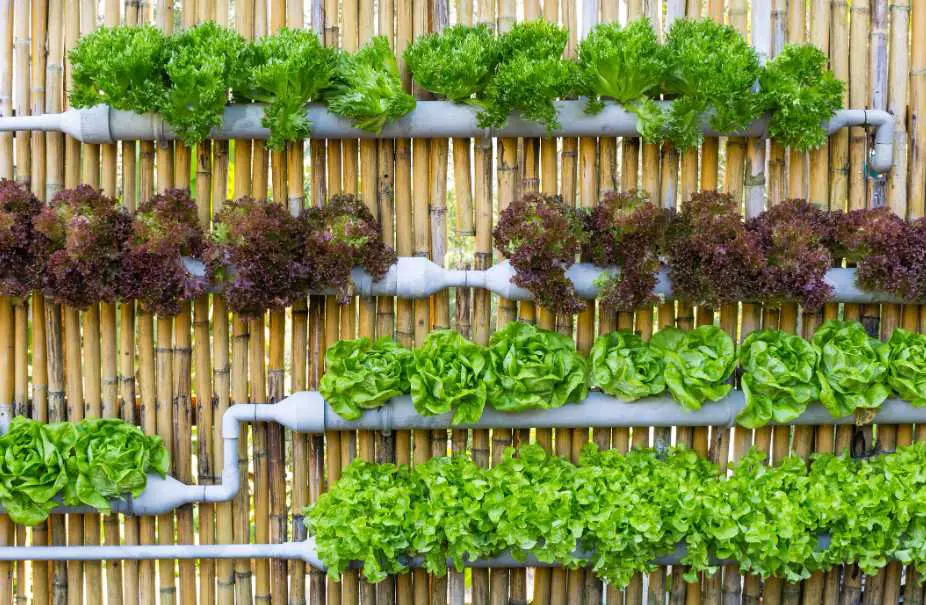
Watering
Depending on your location, water can become a problem. It’s a good idea to arrange a water catchment system to ensure supplies stay consistent. Alternatively, you can set up your boat so that your plants can be moved into the rain if possible or necessary.
Why to Grow Plants on a Boat?
As we touched on briefly, growing plants on a boat has many benefits. Being alone in the open water can affect many aspects of the human mind, body and soul. Thankfully, gardening is a hobby that can help in these areas. Some other great reasons for growing plants on a boat are:
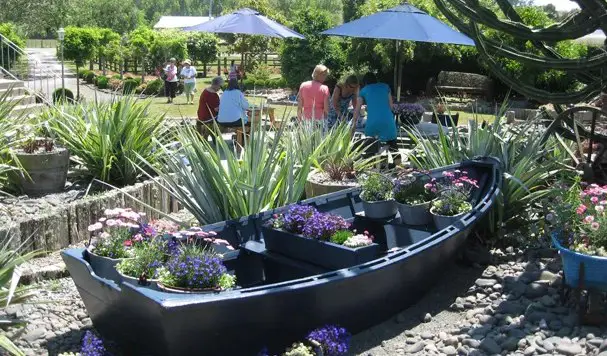
Self- Sufficiency
Self-sufficiency is one of the best reasons to grow plants on a boat. Mother nature can supply an almost endless supply of sunlight, water, air and humidity depending on the weather.
When the sun moves, simply turn the boat around to receive its rays again. When it rains, place your plants outside but be careful not to overwater them as some plants can develop root rot with excess moisture.
To Avoid Boredom
It often seems like time stands still when out on the water. There is something extremely calming and free about that thought, though. If the boredom does become an issue, befriending some plants and tending to their every need is a definite boredom stopper.
Prancing around with a watering can, tinkering and pruning just reeks of happiness. I know I would not get bored if placed in that situation.
Produces Dopamine
Aside from a cure for boredom, tending to plants on a boat can produce high amounts of dopamine. Growing, nurturing, harvesting and cooking all your produce is one of the greatest gifts.
Plants also can purify the air, which is hard to compete with fresh boat air, but it goes a long way towards making you feel good. Not to mention all of those happy colors!
Gives the Boat a Fresh Look
Having a heap of greenery and bright colors can also lift the appearance of a dreary old boat. Plants are a great natural source of decoration. Just a few touches here and there can dramatically change your boat’s look.
Fewer insects
Surprisingly, bugs probably won’t want to waste all their energy traveling out to sea (if that’s where your boat is). So, having any kind of bug infestation amongst your plants will reduce dramatically. Of course, you may get the odd fly or mosquito here and there, but the more damaging species wouldn’t even know where to find you.
Of course, it’s different if your boat is closer to land, like in a canal or on a lake, for example. At least slugs and snails will be much harder to find on a boat as they usually travel from land.
Which Plants to Grow on a Boat?
Not all plants can survive when grown on a boat. Some don’t do too well with the excess moisture and possible salt content in the air.
Additionally, some species need to change their soil consistency as they use the nutrients much faster when grown in the water. Some plant types thrive extremely well when grown on a boat, though. These include:

Basil
Basil is a good plant to grow on a boat with you. It loves the heat, water and sun. As long as the roots get the chance to dry out, the plant will go crazy with growth. Basil is also very versatile. You can spruce up a huge range of dishes with this simple herb. Additionally, it can be dried out and stored for longer periods.
Crucifix Orchid
Crucifix Orchids are extremely easy to care for. They often originate in the Caribbean and the Americas’ often muggy and dry jungles. This ensures that they would survive whilst growing on a boat which can produce a similar environment. Their biggest craving is good drainage and full sunlight.
Aloe Vera
Aloe Vera is a great plant when cruising around on the open water. It requires minimal water and grows extremely well in full sun. It can also double up as a topical antiseptic and antibacterial. To top it off, you can throw it into various meals and make healing teas from it.
Spider Plant
Spider plants are not only low maintenance but quite fun to have to lie around. Their crazy aesthetically pleasing spider-like leaves boof out all over the place. You can hang them in the tightest spaces to give your sea home a nice upheaval. They require water once a week and don’t need much sunlight.
Peace Lily
Peace Lily are beautiful flowers that can lift the vibe of almost any growing space. They are generally easy to grow, although they prefer to be in a bright area, out of direct sunlight. Peace Lily doesn’t need too much space, and you can have smaller pots spread around the place. Apart from that, they are just a joy to have around.
Lettuce
Lettuce is one of the easiest plants to grow. They are versatile regarding food and don’t require too much space. Lettuce is better growing inside of a boat as the extreme heat, and direct sun can burn the leaves. They also enjoy consistent watering and will bolt if not given an adequate amount.
Green onions
Green onions are another perfect boat companion. They suit a range of dishes, including garnishes for salads, additives for soups and most frying pan-style cuisines. Green onions thrive best in full sun and don’t mind a good watering.
Celery
Surprisingly, celery is one of the healthiest plants on the planet. That makes it an awesome additive to any boat garden. The vitamins in this vegetable pack are super potent and can single-handedly ward away any unexpected illnesses. The only issue is the space that they take to grow.
If you have space, though, then celery is worth cultivating. They love the full sun and need lots of nutrients and water. Planning your growth around celery alone will reward you 10 fold.
Conclusion:
Growing plants on your boat are beneficial in several different ways, from antidepressant to time killer and also being a living, floating salad bar. The easiest way to achieve a garden like this is by using hydroponics.
The open water can provide most of the ingredients required to grow a decent-sized garden for free! We hope that you have found value in this article. Happy floating and growing!


